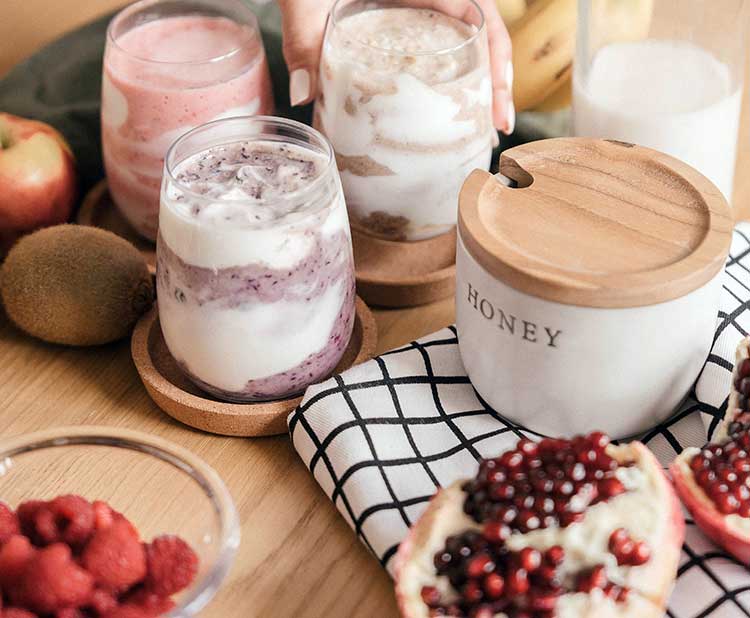Learn Essential Kitchen Skills and Build Cooking Confidence in Cold Weather
LifeSkills Academy Blog
Check back often to find interesting information and updates.
Learn Essential Kitchen Skills and Build Cooking Confidence in Cold Weather
Written By: Sandi MacCalla, Founder - LifeSkills Academy ~ 12/08/2025
When the weather turns frosty, the kitchen becomes one of the coziest classrooms in the house. Winter practically invites us to cook—warm ovens, simmering soups, the smell of chocolate chip cookies drifting through the house. And whether you’re teaching a bright-eyed mini-chef or you’re a delightful late-bloomer finally embracing your inner Julia Child… winter is the perfect time to build cooking confidence.
Because let’s be honest: some of us learned the hard way that cookies do not bake faster at 450°. And that reading the recipe after you start is not, in fact, a personality trait—it’s a hazard.
Good news? Cooking is a life skill anyone can learn, and winter is the perfect moment to start.
Beginner Tips for Budding Chefs (Kids & Late-Bloomers Alike)
1. Safety First
Before we sauté, whisk, or flambé anything (let’s save the flambé for much later), let’s cover safety—because confidence in the kitchen grows from knowing how to work safely.

-
- Read the recipe—first, and all the way through.
This may be the most overlooked step in cooking history. Encourage kids (and yourself!) to read the recipe before turning on the stove. Then read again as you go—recipes are basically instruction manuals for edible success.
- Read the recipe—first, and all the way through.

-
- Knife Safety made simple
Teach kids the “claw grip” and start with safe, kid-friendly knives if needed. Here’s a great beginner video:
https://www.youtube.com/watch?v=YrHpeEwk_-U - Heat Safety matters
Pan fires happen—especially when enthusiasm outruns experience. If something flares up, smother it with a lid to remove oxygen.
No water. No waving the pan around like a firefighter in training.
- Knife Safety made simple
2. Measuring Like a Pro
Cooking and math go together beautifully, and winter is the perfect time to turn the kitchen into a hands-on learning lab.

-
- Pre-measure ingredients
Setting everything out ahead of time—called “mise en place”—keeps your cooking process calm, organized, and delicious.
- Pre-measure ingredients
-
- Practice simple math
Kid chefs love adjusting servings. Doubling a recipe? Halving it? Suddenly fractions become fun. - Remember: baking is science, cooking is art
Baking behaves best when measurements are exact.
Cooking? A little flexibility adds flair. (Accidentally adding cinnamon instead of cumin? Not so much flair—but a good learning moment.)
- Practice simple math
3. Show Your Kitchen Some Respect
The kitchen truly is a magical place for connection, creativity, and warm family moments. Respecting the space makes cooking smoother and safer.

-
- Gather everything you need before you begin
Bowls, ingredients, pans, utensils—having them ready prevents mid-recipe panic. - Clean as you go
This one is a gift to future you.
Also: fewer dirty dishes at the end = more time to enjoy your creation. - Avoid cross-contamination
Teach kids early about separate cutting boards, handwashing, and keeping raw foods far from ready-to-eat foods.
- Gather everything you need before you begin
Fun Recipes to Help Mini-Chefs Explore
Let the kitchen become a playground! Here are cozy, kid-approved, beginner-friendly winter recipes to try:
🍪 Chocolate Chip Skillet Cookie (with video!)
A giant cookie? Yes, please.
☕ Hot Chocolate Floats – NeighborFood
Winter magic in a mug.
🥚 Barefoot Contessa: Egg Salad Tartines
A great intro to simple chopping and mixing.
🧀 Ina Garten’s Ultimate Grilled Cheese
Golden, gooey perfection—kids love this one.
🍔 Best Smash Burger Recipe
A great way to learn heat control and timing.
🍝 16 Delicious Kid-Friendly Pasta Recipes
Perfect for cold nights and picky eaters alike.
These recipes introduce kitchen basics with delicious rewards.
Let Curiosity and Courage Lead
If your mini-chef falls head over heels in love with cooking (and many do!), consider introducing them to this kid-friendly cooking club for deeper skill building and monthly culinary adventures:
👉 https://www.raddishkids.com/
Cooking builds so much more than meals—confidence, creativity, problem-solving, and lifelong life skills. Winter is the perfect season to stir up those gifts.
Thoughts to Ponder:
Learn how to cook
Try new recipes
Learn from your mistakes
BE FEARLESS
And above all, HAVE FUN!
~ Julia Child
Stay Warm, Learn Skills, and Build Confidence — Every Week!
Join the LifeSkills Academy mailing list for cozy seasonal tips, beginner-friendly skills, family activities, and uplifting encouragement you can use right away. Whether you're raising capable kids or you're a late-bloomer polishing life skills with fresh energy, you belong here. We share practical insights, helpful tools, uplifting reminders—and a sprinkle of humor—delivered straight to your inbox.
Let’s build confidence and life skills together.
Join today and never miss a new resource!
Healthy Routines to Beat Winter Seasonal Blues
Written By: Sandi MacCalla, Founder - LifeSkills Academy ~ 11/24/2025
Mental Health Tips | Morning Light Routines | Exercise & Nutrition Hacks
Winter has a way of changing the rhythm of life. Days grow shorter, light fades early, and our motivation dips right along with the temperature. If you’ve felt a little heavier, slower, or less inspired during winter—you're not alone. But here’s the good news: we are not at the mercy of the season. With small, intentional routines, we can bring warmth, energy, and joy back into the winter months.
Scripture reminds us:
“In all these things we are more than
conquerors through Him who loved us.”
~ Romans 8:37
That means you are not powerless. You were made to rise, to adapt, to thrive - even in the darker months. Let’s consider simple habits to brighten our mind, strengthen our body, and nourish our spirit.
1. Morning Light Rituals: Brighten the Start of Your Day
Light tells your brain it’s time to be awake, alert, and motivated. In winter, we often don’t receive enough natural light, which disrupts our mood and energy.

Try These Daily Light Boosters:
- Open natural morning light immediately after waking
- Step outside for 5–10 minutes of natural light (even on cloudy days)
- Consider a sunrise simulation alarm clock (gradual light and sounds increase wakefulness gently)
- Use a Light Therapy Box (10,000 lux) for 15–30 minutes
Affirmation to Begin Your Day:
“Today I welcome the light. I choose life, faith, peace, and renewed hope.”
2. Gentle Movement + Exercise Hacks
Movement releases endorphins, reduces fatigue, and improves sleep—all crucial during winter.

Ease Into Motion:
Instead of planning full workouts, try micro-movement bursts throughout the day:
Habit Stack Idea:
Pair movement with something you already do:
- While brushing teeth → Do calf raises
- After pouring coffee → Do 10 slow squats
- Before checking email → Breathe deeply for one minute
Small steps compound into big energy shifts.
3. Nutrition That Sustains Well-Being
Winter cravings lean toward comfort foods—and that’s okay! We simply upgrade them.

Nourishing Add-Ins:
- Add a handful of fresh spinach to soups or eggs
- Swap sugary snacks for warm herbal teas w/honey + almonds, pistachios or walnuts
- Include Omega-3 rich foods (salmon, tuna, walnuts, chia seeds)
Helps support mood regulation
Hydration Check:
In cold weather we often drink less without realizing it.
Try:
- Keeping a warm-water or tea thermos nearby
- Setting a “sip cue.”
- A sip cue is simply a trigger to drink water.
Instead of tracking ounces, tie drinking water to an existing behavior — for example:- Take a sip before every meal
- Take a sip when you return to your desk
- Take a sip each time you switch tasks or locations
This keeps hydration effortless and automatic rather than another item to remember.
Simple Winter Mood-Boosting Snack:
Greek yogurt + honey + cinnamon + chia seeds
(Stable energy/protein, brain-supporting fats, and a bit of sweetness!)
4. Protecting Mental + Emotional Health
Winter is a wonderful season to practice gentleness—with yourself and others.

Winter Emotional Care Practices:
- Journal 3 lines a day (not long—just real)
- Choose one life-giving, calming hobby (reading, knitting, baking, puzzles, watercolor)
- Limit “doom-scrolling” – set a time limit on the news, weather reports, world updates.
- Schedule connection with friends, family and community instead of waiting for it. Time-blocking can be an easy way to do this.
Need support or mental health tools?
- National Alliance on Mental Illness: https://www.nami.org/Home
- Christian Counseling Finder: https://www.aacc.net/
Remember:
Asking for help is an act of strength and clarity—not weakness.
5. Spiritual Grounding + Truth-Telling to the Soul
When winter feels heavy, speak truth into your atmosphere.
- Read one Psalm each morning (start with Psalms 27, 46, or 91)
- Play worship music softly in the background while doing chores or sleeping.
- Pray while walking, stretching, or cleaning - let prayer live in motion
“The light shines in the darkness, and the darkness has not overcome it.” John 1:5
Winter Habit Reflection Prompts
Choose one per day or each week:
- What is one thing that brings warmth to my heart?
- Where can I exchange heaviness for gratitude today?
- What small routine makes me feel more like myself?
Inspiring Quote to Carry into Your Week
"Don't be pushed by your problems. Be led by your dreams.”
~ Ralph Waldo Emerson
You've got this. You are strengthened. You are renewed. And yes, you are more than a conqueror.
If you're interested in being informed about LifeSkills Academy’s classes, valuable life skills content, and updates, sign up for our newsletters and class notices. Join us on the journey of continuous learning and personal growth. Together, let's build a foundation for success in both our life and our world.
The Power of Gratitude to Last All Year
Written By: Sandi MacCalla, Founder - LifeSkills Academy ~ 11/24/2025
Why Gratitude? | Gratitude Journal | The New Thankful YOU
Gratitude has a quiet power. It doesn’t shout, demand, or insist. Yet it changes us—gently, steadily, deeply. When we practice gratitude consistently, our perspective shifts. We begin to see the world not just as it is, but as it can be. Gratitude helps us notice what is good and meaningful, even when life feels heavy or uncertain.
The remarkable thing is this: gratitude is not a feeling we wait for—it’s a skill we practice. And like any skill, it grows with use.
Click here to download the Gratitude Journal Template - let's get started!

This season—and every season—let’s set the intention to live gratefully on purpose. Not just in November. Not just on holidays. But every single day.
1. The Benefits of Gratitude
a. Physical Health

Research continues to show that gratitude is good for the body. People who regularly practice thankfulness often experience:
-
- Improved sleep
- Reduced stress levels
- Lower blood pressure
- Increased energy and resilience
When your mindset is calmer and more centered, your body responds in kind. Gratitude literally helps us breathe more deeply and rest more peacefully.
b. Mental Health
Gratitude interrupts cycles of worry, stress, criticism, and overwhelm.
By intentionally shifting your attention toward what is going well—or simply what is still good—you create space for hope. Gratitude is not denial; it is reorientation. It says: There is beauty here, too.
This helps reduce:
-
- Anxiety
- Negative self-talk
- Comparisons
- Feelings of scarcit
And it encourages:
-
- Confidence
- Contentment
- Presence
- Peace
c. Gratitude Builds Stronger Relationships
When you thank others sincerely, you give a gift that strengthens trust, connection, and warmth. People feel seen. They feel valued. And you become someone who brings out the best in others.
d. Gratitude Helps You Become a Better Version of Yourself
Practicing gratitude shapes character.
It invites humility, patience, joy, and generosity.
It reminds us: “There is enough. I am enough. Life is good, and I can contribute something good to it.”
2. Building a Habit of Thankfulness (Tools That Work)
Gratitude grows when it becomes part of your everyday rhythm—not just something you think about in passing. Here are practices that help make thankfulness a way of life.
a. Gratitude Journaling

Click here to download the Gratitude Journal Template - let's get started!
A gratitude journal should be simple, approachable, and enjoyable—not a chore.
Try these three quick daily prompts:  Create a templated journal page that you repeat daily.
Create a templated journal page that you repeat daily.
No pressure. No lengthy writing needed.
Just a few honest words to anchor your mind.
If desired, use seasonal colors, icons, or short inspiring quotes to make the experience joyful. The goal is consistency, not perfection.
b. Gratitude Through Prayer

Prayer is both a release and a remembrance.
It allows us to place our worries in God’s hands—and to return our hearts to peace.
Two grounding scriptures to guide reflection:
Philippians 4:6-7
Do not be anxious about anything, but in everything, by prayer and petition, with thanksgiving, present your requests to God. And the peace of God… will guard your hearts and your minds.
1 Corinthians 15:57
But thanks be to God! He gives us the victory through our Lord Jesus Christ.
Gratitude in prayer reminds us that we are not carrying life alone.
c. Give “Thanks” to Everyone You Engage With
This is a life-shift.
Most people notice what’s wrong.
Thankful people notice what’s good.
Try this:
-
- Thank your Barista.
- Thank the store employee
- Thank your child for their effort
- Thank your spouse for their presence
- Thank yourself for progress (not perfection)
This is not typical behavior in the world—so it stands out.
And it lifts the room wherever you go.
This is what living the trophy-life looks like:
Not showing off achievement—
but celebrating growth, goodness, and grace.
3. Become a Thankful Receiver

Gratitude is not only about giving thanks—it is also about receiving it.
When someone thanks you:
-
- Pause
- Look them in the eye
- Let the moment be meaningful
Respond with:
-
- “Thank you. That means a lot.”
- or
- “I’m grateful you noticed.”
No deflecting.
No dismissing.
No minimizing.
Let your heart say, “Yes, this is a good moment. I will take it in.”
And then — Do a little victory dance inside.
Because you are growing, healing, and becoming.
The New Thankful YOU
Living with gratitude is not about ignoring hardship.
It’s about choosing to see goodness, purpose, and hope even within life’s challenges.
Gratitude doesn’t just change your day—it changes your life.
So, begin today:
-
- Write one thing you are thankful for.
- Say one word of thanks aloud.
- Pause and receive thanks when it comes your way.
This is how the new Thankful You begins. And it is a beautiful beginning.
We must find time to stop and thank the
people who make a difference in our lives.
~ John F. Kennedy
Join us at LifeSkills Academy, where we offer e-learning classes in Etiquette/Social Intelligence, Financial Skills, and Personal Organization. Sign up for newsletters and class notices to start your journey toward a more intentional and fulfilling life.
Most Recent Posts ...
Posted on: 12/8/2025
Posted on: 12/1/2025
Posted on: 11/24/2025
Posted on: 11/17/2025
Search All Blog Posts
Blog Post Archive Categories
- Learn Essential Kitchen Skills and Build Cooking Confidence in Cold Weather
- Harvesting Good Habits: Start Small and Grow Big
- Preparing Your Finances Before the Holidays Hit!
- Healthy Routines to Beat Winter Seasonal Blues
- The Power of Gratitude to Last All Year
- Gifting What Matters: Time, Talent & Treasures That Touch the Heart
- Halloween Etiquette: Teaching Respect and Community Spirit
- Words of Wisdom: Traveling 2024
- Thankful Thursdays
- My interview with Dennis Pearce


